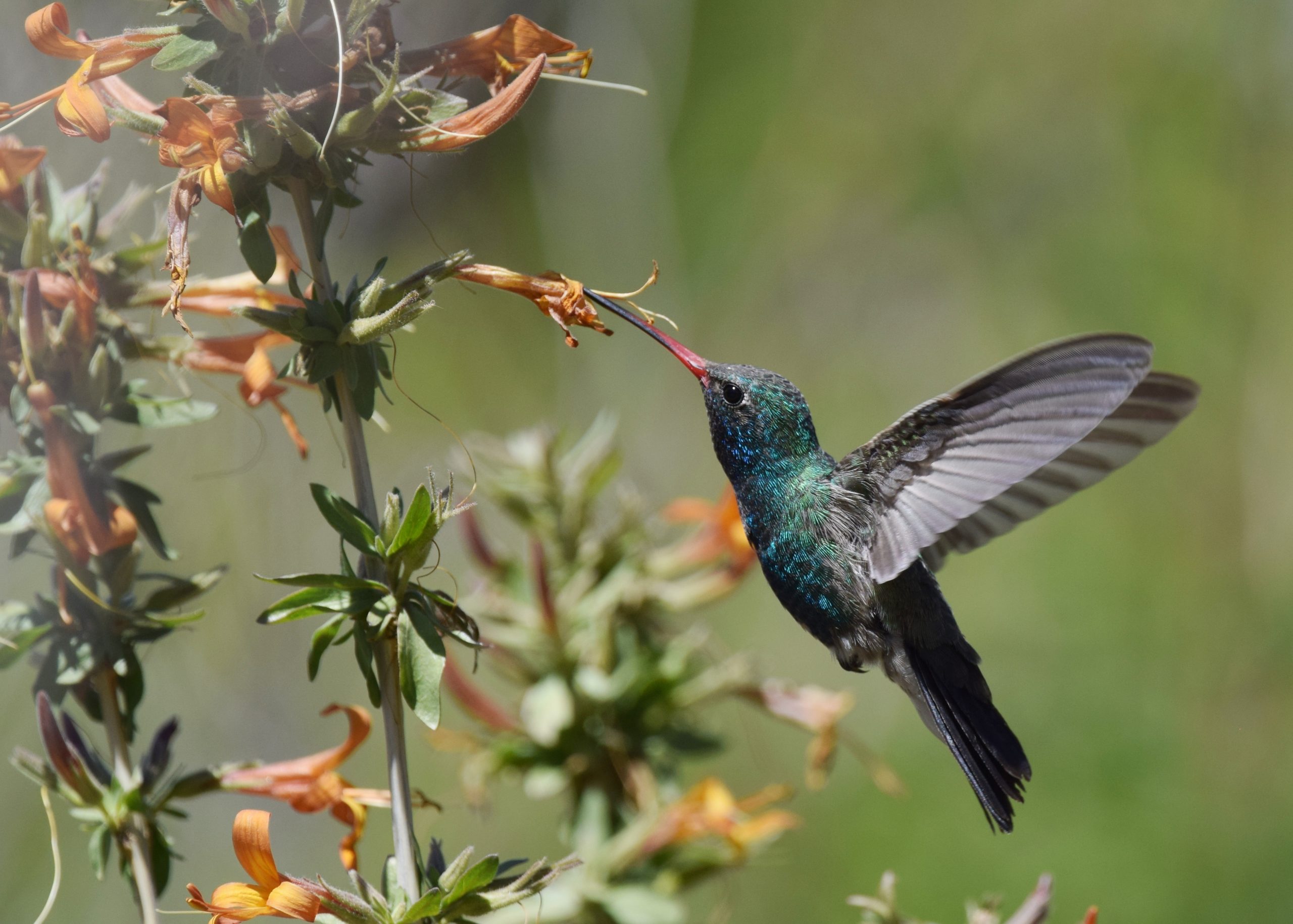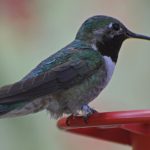The broad-billed hummingbird (Cynanthus latirostris) is a small, vibrant bird found in Mexico and the southwestern United States, including Arizona. Known for its bright colors and distinctive red bill, this bird exhibits notable sexual dimorphism. Juveniles typically resemble adult females more than males. Also called Colibrí Pico Ancho in Spanish and Colibri circé in French, the broad-billed hummingbird is active during the day.
Taxonomy and Classification
The broad-billed hummingbird belongs to the Cynanthus genus within the emerald clade of hummingbirds. This clade formed between 10 and 15 million years ago and includes around 360 species categorized into nine different groups. William Swainson formally described this species in 1827 based on specimens from Mexico.
Subspecies Details
Three recognized subspecies exist:
- C. l. magicus: Found in southwest USA, Sonora, Sinaloa, and Nayarit.
- C. l. propinquus: Resides in central Mexico.
- C. l. latirostris: Located from Tamaulipas to Veracruz.
Previously included subspecies like Tres Marias (now C. lawrencei) and turquoise-crowned hummingbirds (now C. doubledayi) have been reclassified as separate species.
Size – Weight, Length, Wingspan
This tiny bird measures about 8–10 cm (3–4 inches) long with a wingspan of approximately 13 cm (5 inches). It weighs only 3–4 grams; males are slightly heavier than females.
Appearance and Features
Broad-billed hummingbirds are metallic green dorsally with duller crowns and foreheads:
- Males: Dark green bodies with blue throats, white undertail-coverts, blackish-blue tails.
- Females: Pale bellies with white eyestripes behind their eyes; tails have white tips. Juvenile males develop brighter red bills over time but lack white-tipped tails initially.
Where They Live – Including Arizona Locations
In Arizona’s streamsides and oak woodlands, these birds thrive alongside dense vegetation near water sources like Arizona sycamores or Fremont cottonwoods.
Habitat Preferences
Their preferred habitats include arid thorn forests along Mexico’s Pacific coast or desert canyons during breeding seasons across southwest USA through central Mexico.
Diet And Eating Habits
Broad-billed hummingbirds feed on nectar from flowers like agave or desert honeysuckle while also catching insects midair or plucking them off plants:
- In southern regions like Jalisco or Nayarit where they compete for food resources against cinnamon hummingbirds.
They visit sugar-water feeders too!
Migration Habits
Breeding populations migrate southward into deeper Mexican territories during November returning by early March; sightings occur occasionally across various US states such as Texas or even Oregon!
Conservation Status And Threats
Listed under Least Concern by IUCN but included within CITES Appendix II regulations due to potential threats affecting their natural habitats—though currently stable without significant decline trends observed globally so far!


